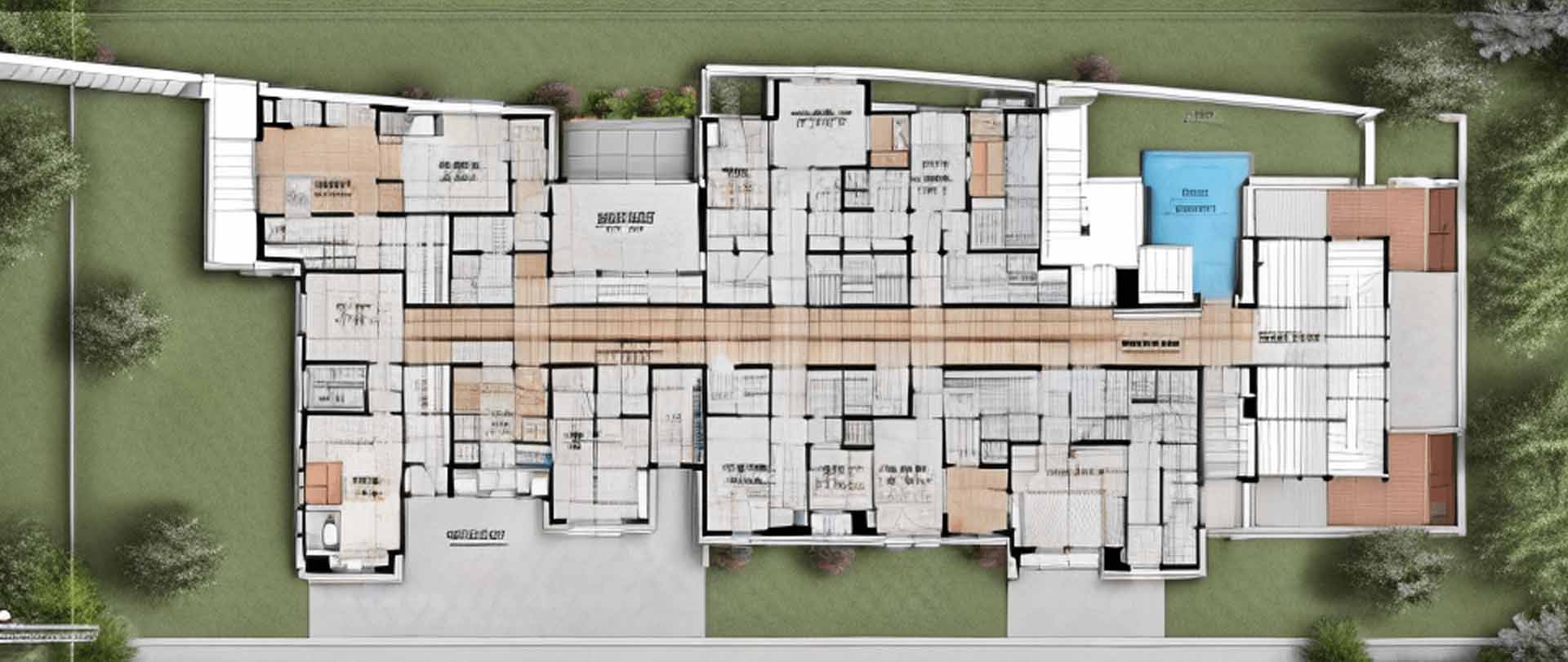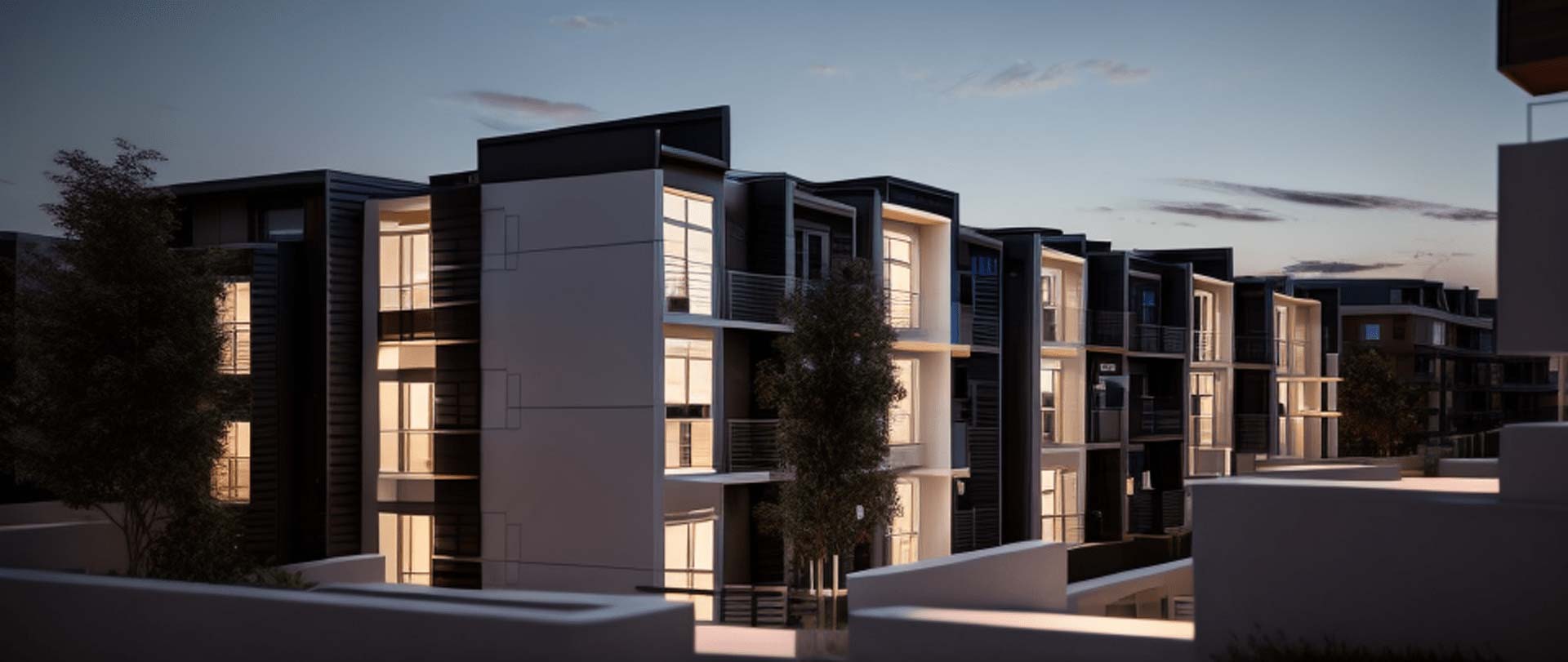
Understanding Floor Area Ratio (FAR) and Its Impact on Development
You remember learning about ratios in elementary school, right? Well, that skill will come in handy for our next topic: floor area ratio (FAR). It sounds complicated, but it’s really as simple as dividing one number by another. As long as you have the necessary information at your disposal, this calculation is as easy as figuring out the apple-pie-to-stomach ratio you enjoyed this Fourth of July.
Floor area ratio is an important determining factor in zoning laws and project feasibility. In this article, the Robertson Architecture team will explain the definition of FAR, how to calculate it, and the number’s impact on development. FAR is a key element in determining whether your intended program will fit on your desired lot, so it’s important to understand this number before purchasing a property.

What is Floor Area Ratio?
Floor Area Ratio (FAR) is the amount of legal buildable space allowed to be constructed on a particular plot of land. This number is crucial to developers because it determines the total square footage of the structure you can build on any given lot.
How to Calculate Floor Area Ratio
Floor area ratio is calculated by dividing the total building floor area by the gross lot area. In new development, you have to work backward using the floor area ratio specified in the zoning laws to determine the amount of square footage allowed to be constructed on a lot.
If the zoning code for a lot you’re interested in purchasing states that the FAR is 0.40, then you should multiply the lot size by 0.40 to determine the total amount of square footage allowed to be built on the property. If you are interested in a 1-acre lot for your development, which is equal to 43,560 square feet, and the FAR is 0.40, you multiply 43,560 SF by the FAR of 0.40 to get a total of 17,424 square feet of total space that your development is allowed to span.
Additional Examples of FAR in Action
If you want to build a 12-unit townhome complex on 1 acre with each unit running 2,000 SF, you can only do that if the FAR ratio is 0.55 or higher. How did we figure out that number? 12 units multiplied by 2,000 SF equals 24,000 SF of livable space in your desired development. 24,000 SF is then divided by 1 acre or 43,560 SF, which equals a FAR of 0.55. If the FAR requirement for your desired lot is 0.54 or lower, then you will have to change the scope of your development, pick a different lot, or try to have the property rezoned.
Here is another example of FAR in action. If the lot you’re interested in is 10,000 SF and the FAR is 1, your gross buildable space is 10,000 SF. At this point, you can get creative. You can either build a one-story structure that’s 10,000 SF or build a two-story structure with 5,000 SF per floor, and so on. This number is a key consideration when planning your development. Are you planning to offer yards or outdoor amenities for your units? If so, building up instead of out could be a good option for your program.
Why is Floor Area Ratio Important?
Floor area ratio is a tool cities use to control the bulk size of buildings and ensure cohesiveness among new and existing structures. Urban planners use FAR to limit or expand the density of a given area based on the region’s intended use.
Zoning and FAR
Zoning laws determine what kind of property can be built on a piece of land. These laws include whether the lot allows for multi-family development, single-family homes, commercial use, etc. This zoning regulation will also specify details such as the floor area ratio permitted on the lot along with other factors that will shape the intended development.

If you’ve read our previous articles, you might have noticed a pattern—zoning has a huge impact on development and architecture.
Development and Floor Area Ratio
Floor area ratio is an essential number for developers to consider in the early stages of site selection. The higher the FAR, the larger the allowed square footage for development. Higher FAR numbers are typically more advantageous to developers since they allow for more floor area, which means more value.
If you’re a developer, you should familiarize yourself with the FAR of a lot as soon as you find a piece of land you are interested in. An architect is an excellent resource to have on hand at this stage, as we are experts at determining these nuanced calculations for our clients.
Architects and FAR
Your architect will be familiar with the various floor area ratio regulations throughout their service area or can quickly retrieve this information from the city’s zoning ordinances. This calculation is another reason it can be helpful to hire an architect early in the site selection and development process. Your architect will help you interpret the floor area ratio of a desired lot to understand the property’s development capabilities fully.
Once you find a lot you’re interested in purchasing, your architect can easily look up the FAR to determine the amount of square footage you would be allowed to build on the lot to see if it supports your desired development program. This will help ensure you don’t waste time daydreaming about a particular property if the zoning laws, including the lot’s FAR, won’t support your vision.

Zoning Setbacks
While your lot may allow for you to build a 2,000 square foot structure based on the FAR, that doesn’t necessarily mean you can cover the entire lot from edge to edge with a building. You will also need to understand the setbacks on the lot, such as how far the structure has to be from the road or the neighboring lot line.
Floor Area Ratio Exemptions
Depending on local regulations, some parts of a building or development aren’t included in the floor area ratio. Typically, unfinished basements, attics, and garages are not considered livable spaces in the FAR calculations.
Let’s Chat!
Our team of experts at Robertson Architecture is ready and eager to start your development journey with you. We understand the complexities of zoning laws and equations like FAR and the confusion and frustration they can cause early in a project. We can simplify all of this information for you in a digestible way that allows you to make a clear decision on your development program and the plot of land you want to purchase.
Reach out today to set up a time to discuss the possibilities for your upcoming development project!
Author: David Robertson is an Atlanta based architect and founder of Robertson Architecture. Robertson Architecture on the premise of helping entrepreneurs and like-minded individuals exceed their goals.
In 2018, Robertson Architecture was formed with the single focus of helping homeowners and entrepreneurs exceed their goals. The firm works with custom residential homes, townhouses, restaurants, and hotels all across the Southeast. David has a passion for helping entrepreneurs and homeowners realize their dreams.
With over 10 years of experience, David spent the beginning part of his career working on small to medium sized commercial projects across the U.S., including hospitality projects, office buildings, multi-family, and custom homes.
- David Robertson AIA NCARB
- Office 470.795.9596
- info@robertsonarc.com

0 comments